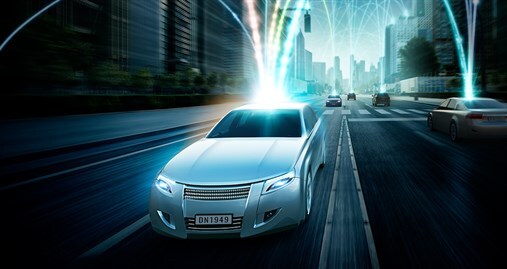DENSO driving the autonomous future

The automotive industry is edging ever closer to advanced autonomous driving, a technology which could ultimately create safer roads across the world, and make driving more efficient. In line with Japanese national goals to reduce the number of annual traffic fatalities to 2,500 or fewer by 2018, and its brand objective to create a safer automotive society, DENSO has been spearheading the movement toward full autonomous technology.
This commitment has resulted in DENSO’s exciting ADAS technology; short for "Advanced Driver Assistance Systems”, the technology is proving essential in the advancement of fully automated driving and in creating safer road traffic environments.

But what does fully autonomous driving look like?
There are four stages of autonomy which DENSO has been working toward. Starting at Level 1, the human operator remains in complete control of their vehicle, but is supported by systems which can perform one single function at a time to minimise the risk of an accident – such as steering away from a stationary object.
One of the most recent developments for the industry has been advanced parking assistance, which is an optimised Level 3 autonomous function, allowing cars to ‘park themselves’ in crowded urban streets. By 2020, this technology will become commonplace, while the boundaries will be pushed still further at Level 4, where the driver will be able to travel safely and legally from their starting point to their destination without having to make a single input to the car’s controls.
How is this possible? The answer is ADAS.

DENSO has been helping to develop forms of autonomous driving for over 20 years. To make ADAS a reality, DENSO is involved in developing products and technologies to improve driver safety and make roads more efficient.
Research into in-vehicle radars and sensors has been one of the focal points of this, developing cameras which can be fitted into a vehicle to detect and recognise potential hazards before they become a danger.
DENSO has also led research into vehicle-to-vehicle and vehicle-to-infrastructure communication. Known collectively as V2X devices, the technology will be able to obtain information on upcoming road conditions which may not be immediately visible to drivers. This could improve safety, with vehicles communicating with one another and with road traffic objects such as traffic lights to reduce avoidable accidents.
Inside the cabin, DENSO is also developing Human and Machine Interface products, including Driver Status Monitors and Heads-up Displays which monitor the state of the driver and provide simple, visible driver display to promote safer driving.
What can sound like science fiction is now very much a part of DENSO’s daily routine as we strive to bring the number of fatalities on the road down to the barest minimum possible. Some dreams are worth having.
Find out more
Further details of DENSO’s projects are available online at www.denso-am.eu




















































